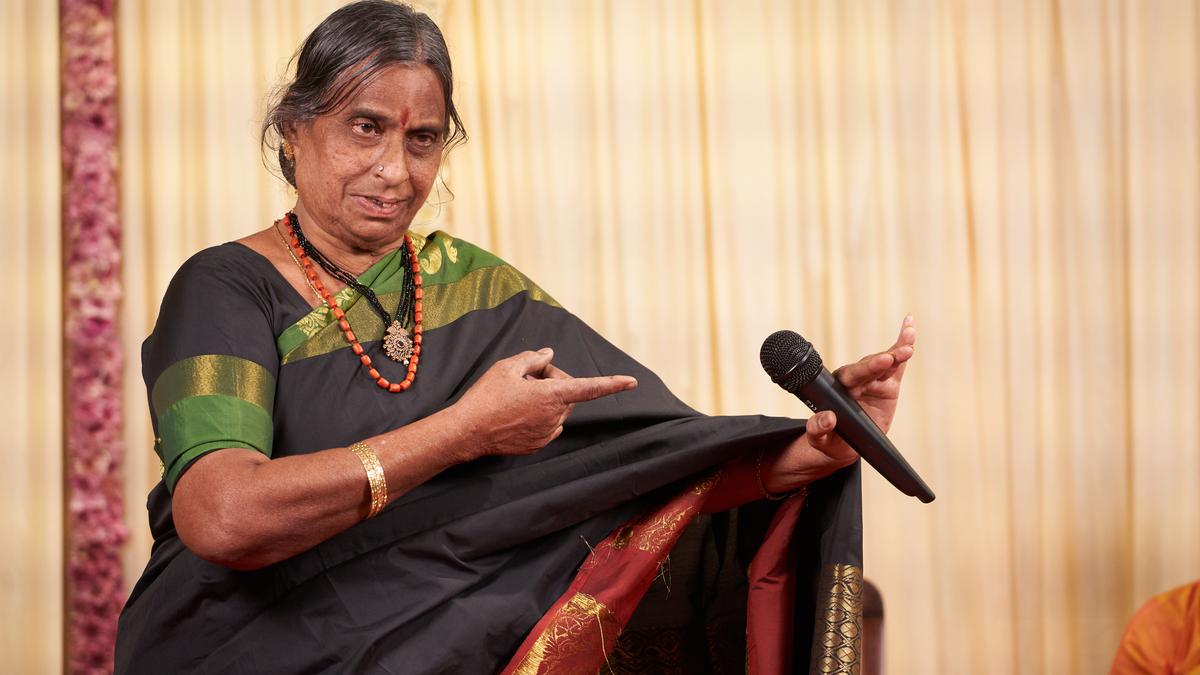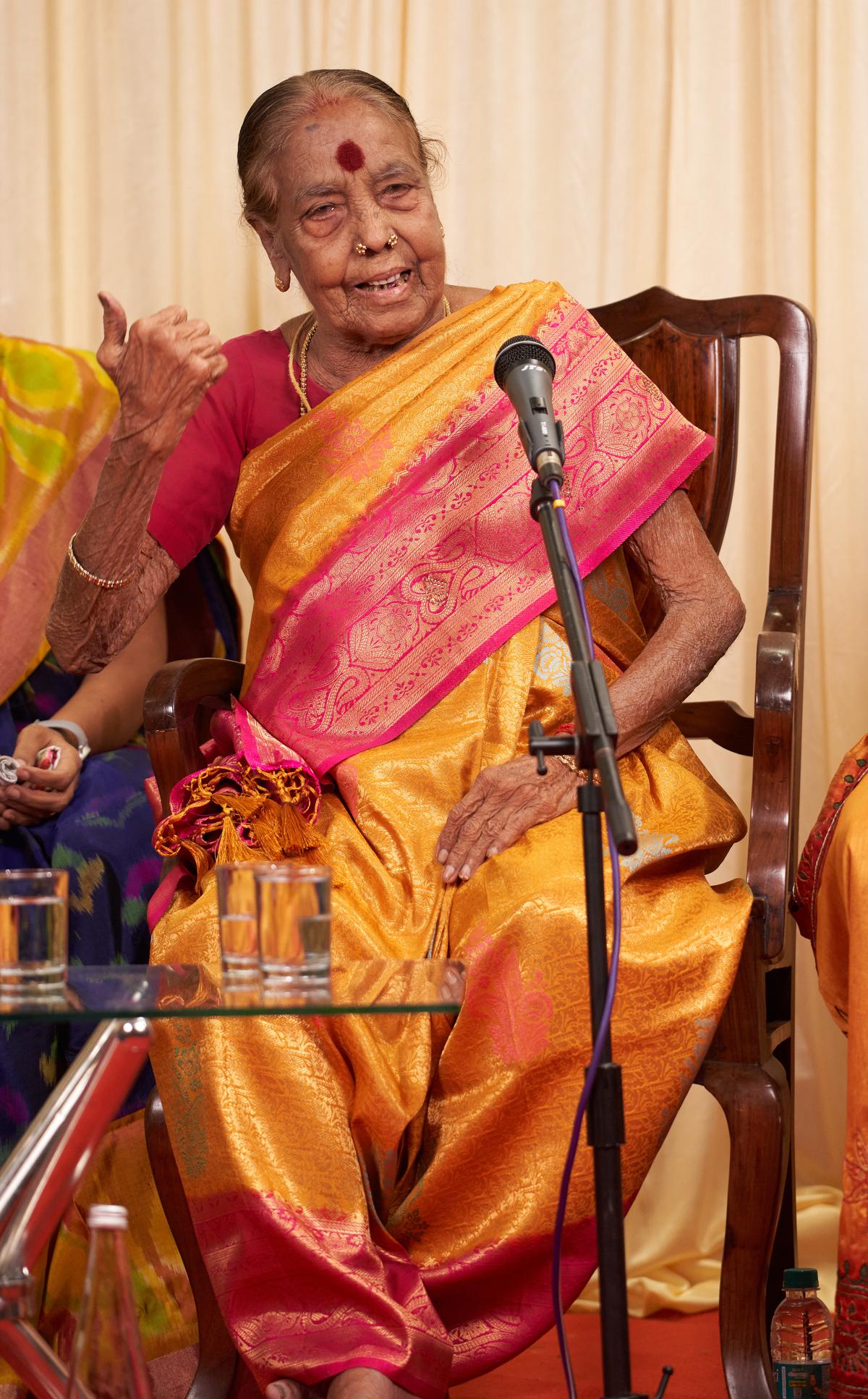
What it means to be a sadir and kalavantulu artiste
Two artistes, one practising Sadir and the other a Kalavantulu, shared their story and journey at an event titled ‘Unspoken Realities’ organised by Kalavaahini Trust (founded by Malavika Sarukkai) and Shreya Nagarajan Singh Arts Development Consultancy. The conversation took place when the Chennai Season was at its peak. But it’s never too late to revisit their talk to understand the history of dance and to know how it has evolved over the years.
R. Muthukannammal, a seventh generation Sadir artiste from Tamil Nadu and Annabattula Lakshmi Mangatayaru, a sixth generation Kalavantulu artiste from Andhra Pradesh met at Amethyst. They sang and demonstrated a few gestures, in the process proving how they are used to the arc lights. Chinnagandham Yashoda Thakore, a sixth generation Kalavantulu artiste from Peddapuram, who performs Kuchipudi and Devadasi Nrityam, was the moderator.
Though the two veterans appeared calm, there was anger within about their scarred past. Yashoda took them back to the year 1947.
Seventy-year-old Lakshmi explained what happened soon after dance was outlawed. “Some women pretending to be Kalavantulu, went into prostitution, and gave us a bad name. We are still bearing the stigma.”

Muthukannamal
| Photo Credit:
SNS Arts Development Consultancy
Muthukannamal, 85, was candid, “We struggled. No one called us. Now everyone is saying Sadir, Sadir…” She is now too old to teach. She was born to Ramachandra Nattuvanar, and as per the tradition in her family was chosen to be dedicated to the Viralimalai Murugan temple (Pottukkatutal) when she was seven.
It was an oral contract. They lived out of the produce from the land given by the temple, which passed down to the next generation dancer, not necessarily a biological relative. She said, “Sadir is all I know and love. After the Act, we were not allowed to dance in the temples and our lands were taken away. But we continued to dance as long as the Pudukottai Maharaja supported us. When we were asked to dance to film songs, we said ‘no’, only Carnatic music.”
Muthukannammal spoke of the 32 Sadir artistes attached to the temple, who would draw kolams and prepare maav for prasadam apart from the four ritualistic dance offerings a day.
She performed the saayaratchai with a diparadhana and a few steps while her father recited jatis with cymbals, and later palliyarai, with a diparadhana and some songs including a Thevaram and an unjal pattu, ‘Radhe shri madhuresa’ sung in solitude to Subramanya with no dance or music accompaniment.
There was a 10-day festival when the deity was taken around the streets in procession and the dancers would perform the ‘veedhi padams’ . Among the songs she readily shared was ‘Koodi sugam kudathu modi ulla dorai’. She broke into a varnam midway, ‘Bhoomi velayu tanja Brihadeesha…’ followed by a theermanam (identified as the anupallavi of ‘Manavi chekona raada’, Sankarabharanam, Adi, Ponniah Pillai). “We have not written down anything that ayya taught us. We remember it all,” she said.
The Subramanya temple is situated on the hill and one has to climb more than 200 steps. Muthukannammal would go up four times a day. “We had no electricity. We did all this for god.”
Annabattula Lakshmi Mangatayaru’s grandmother Buli Venkataratnam was a dancer while mother Sathyabhama was a singer.
Lakshmi hails from the East Godavari district. They were initially attached to the temple, but later performed at the royal courts too. “We were used to performing the ‘salaam’ jathi to the king.” She has learnt the Gollakalapam and Bhamakalapam.
Their repertoire featured many padams by Kshetrayya, Sarangapani and others. There were some on the Triplicane Parthasarathy temple as well.
Lakshmi sang the anupallavi of ‘Illerugaka’, a Kshetrayya padam, ‘Ala naadu neethoti kalasi matladina’. “We presented padams and javalis only for learned audience. You could not repeat a hasta. Even if a line is repeated 20 times, there has to be 20 different hastas,” said Lakhmi.
Buli Venkataratnam, who refused to agree to the legislation, was a contemporary of Balasaraswati. Lakshmi recalled the insecurity of that time. “But she would wake us up at 4 a.m. to make us dance. I was very young and would ask her who will watch us. She would reply, ‘the wheel will turn around, then you should be ready’.”
These artistes were strong women, who were treated unfairly and lost much of the art in the process. Muthukannammal said, “Ah yes, Bharatanatyam is good.” It’s however not the Sadir she learnt.
Stay connected with us on social media platform for instant update click here to join our Twitter, & Facebook
We are now on Telegram. Click here to join our channel (@TechiUpdate) and stay updated with the latest Technology headlines.
For all the latest Entertainment News Click Here
For the latest news and updates, follow us on Google News.

